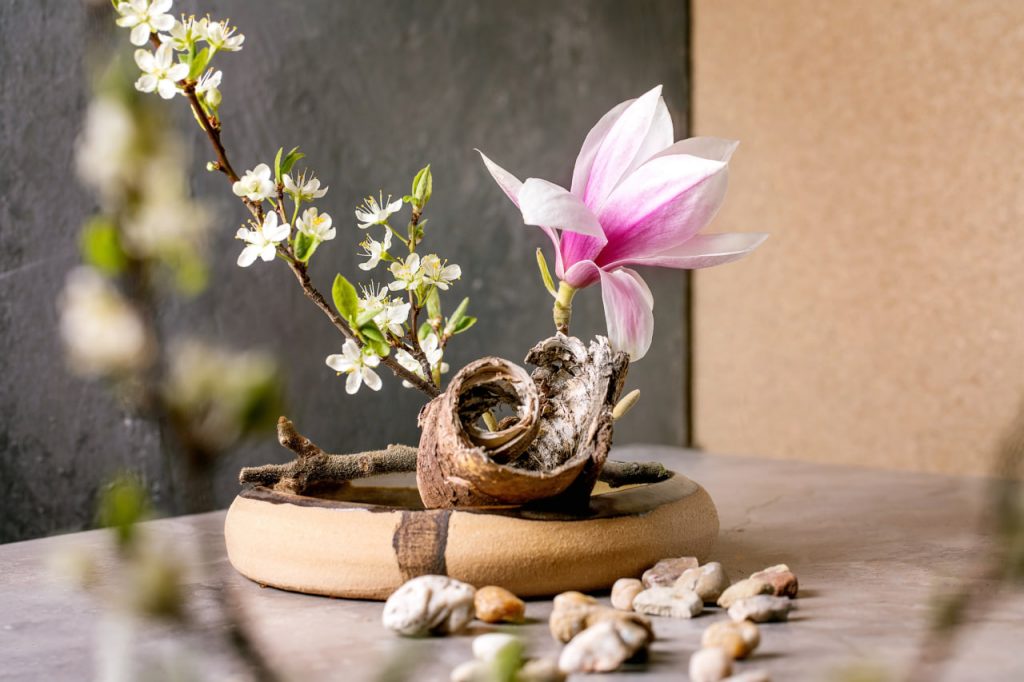In a world that never stops moving, I often found myself caught up in the rush of daily life—always planning the next thing, moving from task to task, and rarely taking a moment to just be. I knew I needed to slow down, but I didn’t know where to start. That was until I stumbled upon Zen Plant Arrangement Courses, and more specifically, the art of Ikebana. Little did I know that this beautiful and meditative practice would not only help me connect with nature, but also with myself in a way that brought much-needed peace and mindfulness into my life.
The Call to Slow Down
At first, I wasn’t sure if Ikebana was for me. My mind immediately rushed to thoughts of busy schedules, never-ending to-do lists, and the belief that I didn’t have the time to add another hobby to my life. But deep down, I knew something needed to change. I was looking for a way to be present, a way to carve out moments of peace in the middle of my hectic days.
When I saw an advertisement for the Zen Plant Arrangement Courses, something about the idea of combining nature with mindfulness struck a chord. I signed up for a class, unsure of what I was getting into, but hopeful that it might offer me a pathway to slow down and breathe.
The Power of Presence in Every Stem
The first lesson was a revelation. The instructor welcomed us with a warm, gentle tone and shared how Ikebana is not just an art form, but a practice of mindfulness. In Ikebana, every element—the flowers, the stems, the vase, and even the space around the arrangement—is intentionally chosen and thoughtfully placed. It’s about creating harmony, balance, and presence with each decision. The very act of arranging flowers becomes an opportunity to focus, slow down, and live fully in the moment.
What struck me right away was the emphasis on space—not just the flowers and plants, but the space in between them. We learned that the empty space in an Ikebana arrangement is just as significant as the plants themselves. This concept of negative space wasn’t something I had ever thought about in terms of design before, and it felt like a powerful metaphor for life. The spaces between tasks, the pauses in conversation, and the quiet moments are often where peace can be found. It taught me that we don’t always need to fill every moment, every part of our day, to create meaning.
A Shift in Perspective
As I started practicing Ikebana, something remarkable began to happen. The practice itself became a form of meditation. At first, I focused on perfecting my arrangements, but soon I realized that the act of arranging the flowers itself was where the magic happened. I started taking my time—savoring each step of the process, paying attention to the feel of the stems in my hands, the shape of the leaves, and the subtle angles of each element.
For the first time in a long while, I was truly present. I wasn’t rushing through the steps; I was letting each moment unfold naturally. If I got something wrong, it wasn’t a mistake—it was a part of the process. I learned to embrace the imperfections, much like I had to embrace the imperfections in my own life. The pressure to “get it right” began to fade, and I realized that the true beauty was in the experience itself, not the final product.
Bringing Mindfulness Into Everyday Life
Ikebana wasn’t just about flower arranging for me—it was a way to bring mindfulness into every part of my life. The lessons I learned from the course started bleeding into other areas. I began taking more time with everyday tasks: whether it was cooking, walking, or simply enjoying a cup of tea. I slowed down. I noticed more. And I felt more connected to the present moment.
Through Ikebana, I learned that mindfulness doesn’t have to be a separate practice reserved only for meditation or quiet moments. It can be woven into the everyday. Each time I created an arrangement, I was reminded that peace and mindfulness are available in every moment—we just need to slow down enough to appreciate them.
Finding Calm in the Chaos
Today, Ikebana is a regular part of my life. I look forward to the quiet moments spent selecting flowers, arranging them thoughtfully, and creating something beautiful. But more than that, it’s become a practice of stillness and reflection. Each arrangement is a reminder to slow down, to breathe, and to appreciate the world around me.
Through Zen Plant Arrangement Courses, I’ve discovered that Ikebana isn’t just about creating art; it’s about creating peace. The art of mindfulness is not found in the end result but in the process—the moments of stillness, the careful choices, and the quiet connection to nature. And that, for me, has been the most transformative part of this journey.
If you’re looking for a way to slow down, reconnect with yourself, and discover the peace in the present moment, I highly recommend exploring Ikebana. The journey is not about perfection, but about presence—and that, in itself, is incredibly powerful.

